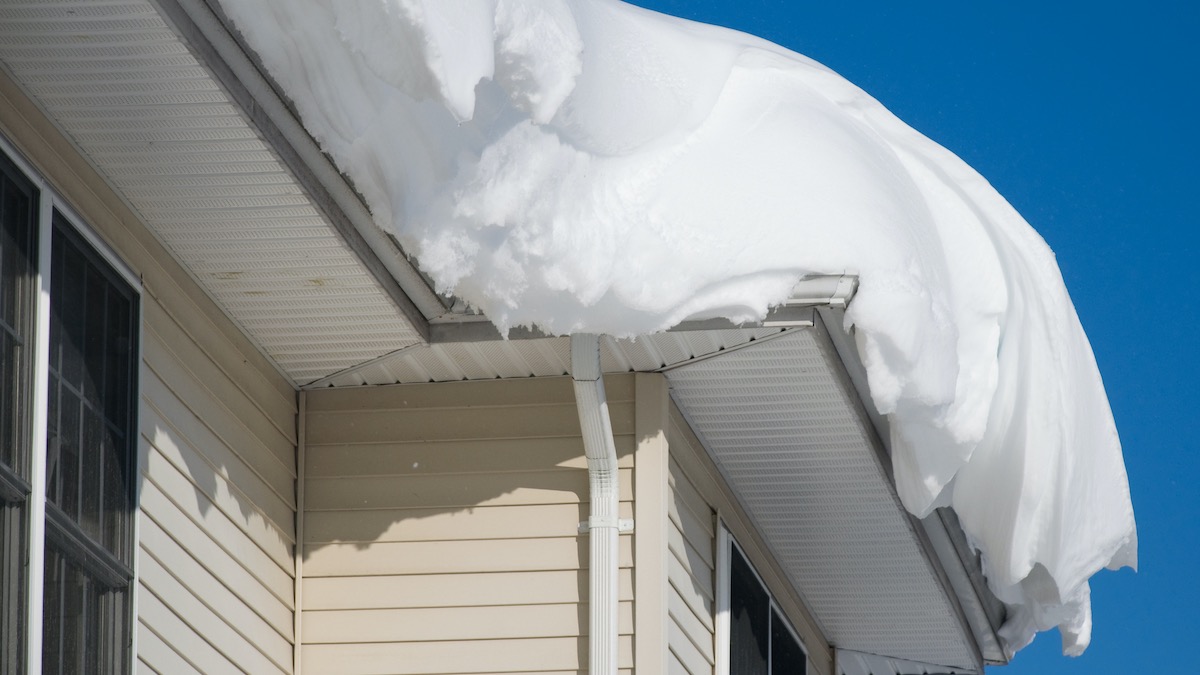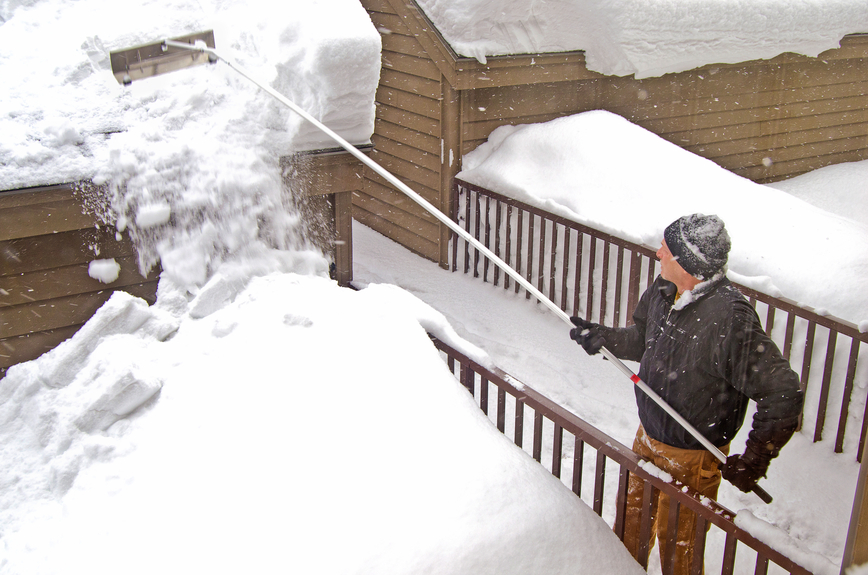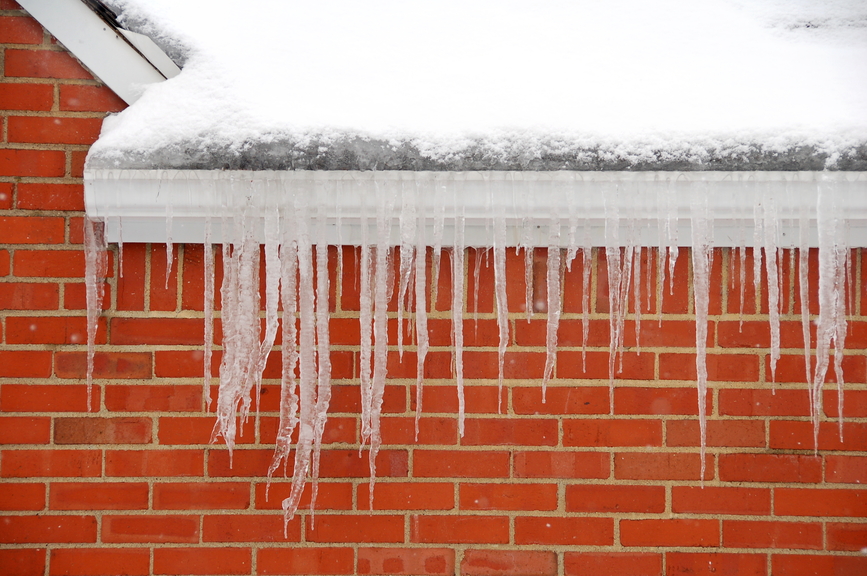
Snow season isn’t far away, so this is a good time to be sure that you understand the importance of removing snow from your roof, and some of the consequences of neglecting that task.
To put it simply, snow is heavy, and that weight increases when rain, ice, and sleet are added to the mix. Consider this: two feet of snow on the average-sized roof weighs 19 tons! That is 38,000 pounds, and all that weight stresses your roof and weakens its structure. When snow melts, it can seep into your roof seams and rot shingles, destroy insulation, flood attics, ruin gutters, and damage the interior of your home.
To avoid that horror story, keep your roof clear of large accumulations of snow, but think twice before you climb up with a shovel. Safety and roof experts caution against that strategy – icy roofs are slippery. One wrong step could cause serious injury. In addition, any weight added to an already-stressed roof might be all it takes to cause your roof to collapse.
Warning Signs of Roof Collapse
A sagging roof is the most obvious sign that it is in danger of collapsing, but there are many other indicators. Creaking, cracking, or popping sounds; severe roof leaks; bowed pipes; cracks in the walls or masonry, and doors and windows suddenly difficult to open are all signs that your roof might be in trouble. Be aware of some of those same signs in your deck, which is also susceptible to collapse under severe snow and ice weight.
Removing Snow from Your Roof

If you are a do-it-yourselfer, here are some snow removal tips.
A roof rake has a long pole that enables you to scrape layers of snow away from the roof. Once snow and ice have already accumulated on your roof, a roof rake is the best option for the nonprofessional. The rake has an extended handle, enabling you to pull snow off the roof from the safety of the ground.
Start from the edge and work your way into the roof using downward strokes. Try to scrape the snow along the bottom of the roof, shaving two or three inches away. Remember that there is no need to scrape the roof entirely clean. You risk damaging shingles if you attempt this.
Again, safety should be your top priority. Metal snow rakes conduct electricity if they contact a power line, so be careful. In addition, avoid using a ladder when removing snow; rungs might freeze and cause you to slip. Instead of a ladder, get extension poles or a longer rake to reach the highest sections of the roof. A roof rake may be purchased for as little as $40, but you will get your money’s worth by spending more on an implement like the Avalanche!® Snow Roof Rake. It sells for around $120 and combines safety with efficiency.
Preventing Ice Dams Forming on Your Roof

It is important to get snow off your roof before it causes ice damage. Ice dams typically form when snow on the roof begins to melt, and water runs down the roof, refreezes and clogs up gutters. When additional snow melts and cannot escape through the gutters, water might travel under shingles and into your house.
Cleaning gutters a couple times a year can help prevent damage. Before snow season, remove leaves, twigs, and other debris from your gutters, and repeat this task in the spring. Also, make sure that your downspouts are clean at ground level.
Adding insulation to attic floors will prevent heat from escaping, which will in turn protect your roof from conditions that cause ice dams.
One final tip: This Old House suggests filling the leg of a pair of pantyhose with chloride ice melter, then placing the hose onto the roof so that it overhangs the gutter. The calcium chloride will melt through the snow and ice, thus freeing up a channel for water to flow into gutters and off the roof.
